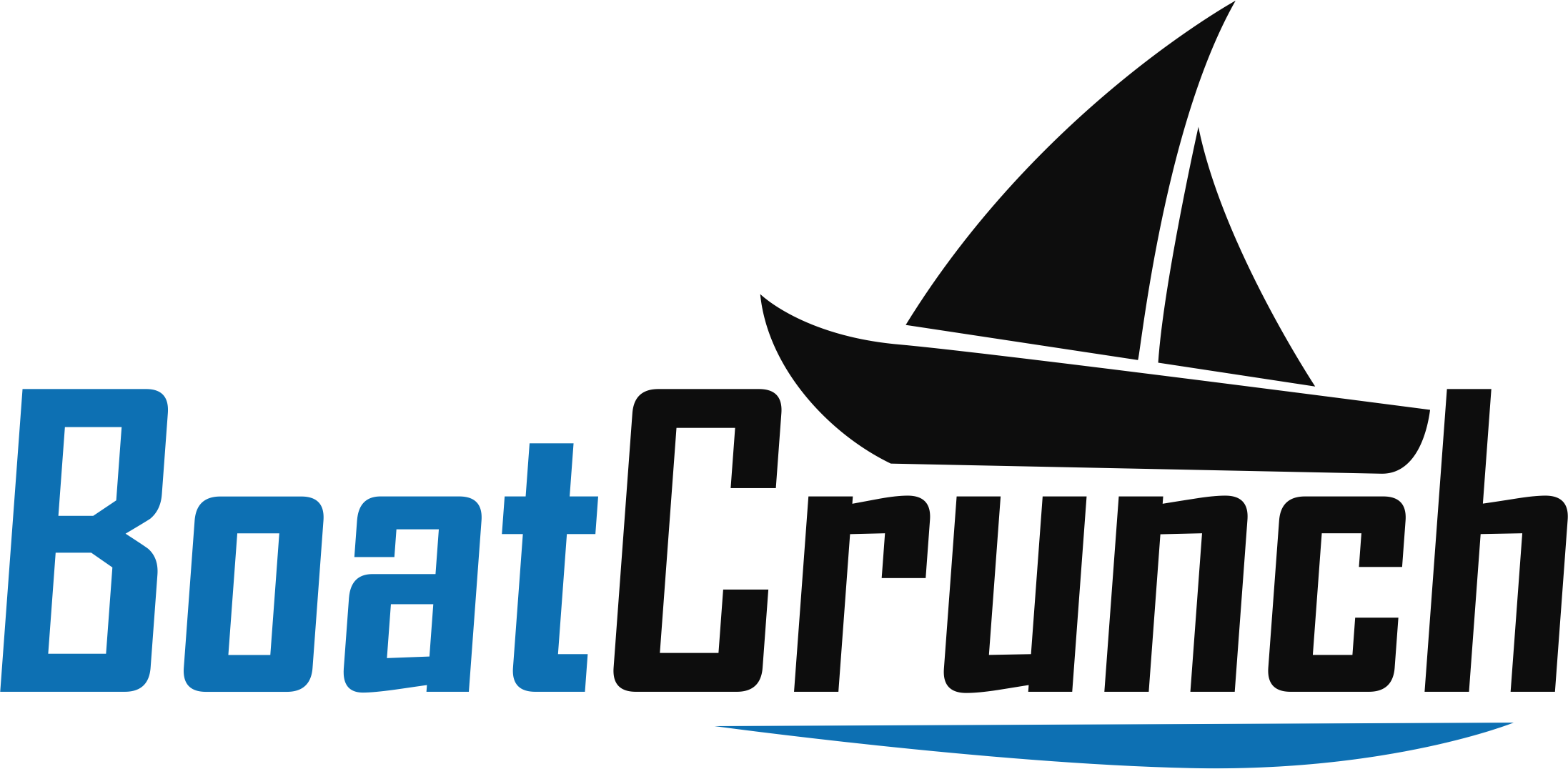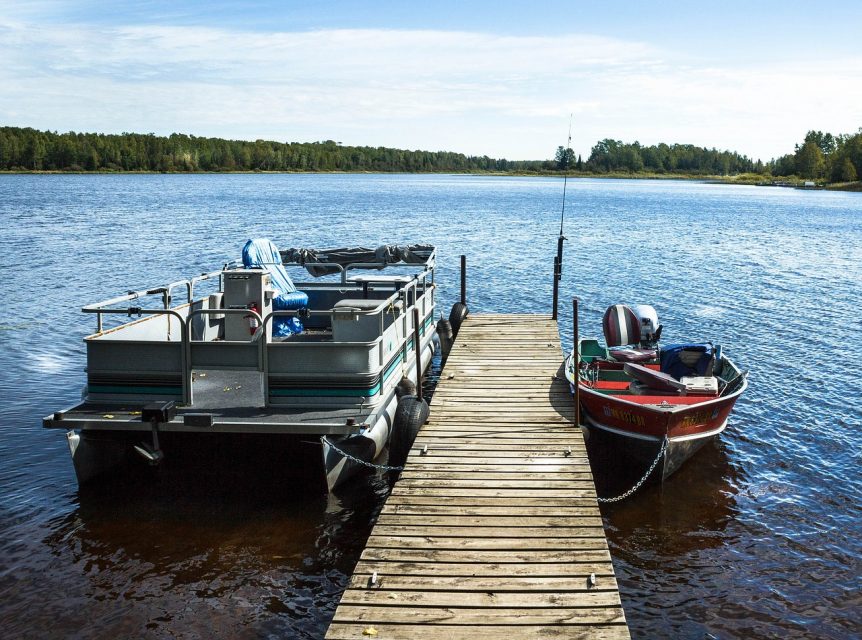Docking a pontoon boat is like parallel parking your car for the first few times. It can be terribly embarrassing and frustrating, especially when you have a crowd of people watching.
It’s just natural to be bad at things initially so don’t be worried.
However, just like parking a car – eventually you’ll get the hang of it and have no issue with it. It just takes some guidance and some practice.
So, don’t be embarrassed, because everyone’s been there.
None is born out the womb knowing how to perfectly dock their boat with any problem at all.
Perhaps, you’ve already got some experience and already know how to dock your pontoon boat but are just interested in some tips and tricks to make the process more efficient.
You’ve come to the right place. I’m going to explain exactly how to dock a pontoon boat, as well as some useful tips which will help you significantly.
After a few attempts with these techniques, you’ll become a master at docking your pontoon.
Preparing to Dock Your Pontoon Boat
Before I explain how to dock your pontoon boat, I must stress how important it is to prepare before-hand. There are a few things you should do before you even begin to attempt docking.
These include:
- Preparing your line
- Make sure there’s no obstructions
- Identify the type of dock your approaching
Instructions to Dock a Pontoon Boat
In this section I’ll explain exactly how to secure your pontoon boat to a dock successfully.
It’s the end of the day, you’ve had fun but it’s time to pull your boat up.
Step 1: Put your boat in neutral and start coasting towards the dock slowly. At the same time, begin trimming up the motor as the water is likely to become shallower closer to the dock. Though, ensure that your prop is still in the water to provide you with steering capabilities. Just raise it slightly so you damage it.
Step 2: Continue to ease your way towards the dock. Approaching slowly is extremely important, especially for beginners. When in neutral, the boat will still respond but nowhere near as much as when it’s in gear. This makes it important to put it in gear if you need to avoid a collision.
Step 3: As you get close to the dock, give yourself time to stop by putting your pontoon in reverse. When you’re 20 feet away from the dock, put your pontoon back into neutral and allow the weight of your vessel to drift you closer.
Step 4: Once your boat is roughly halfway up the dock or where you’re happy with it, put it into reverse and give it a little gas to come to a stop. Reach over to the pillion and tie your boat to the dock with your line.
Video Demonstration:
Tips for Docking your Pontoon Boat
Boat Fenders

One of the most important tips I can give to someone who’s not completely confident in their ability to dock their pontoon boat is to use side fenders.
This is the equivalent to wearing your knee pads when skateboarding. It will protect your boat from damage if it were to knock against anything. Dings and scratches can be avoided very easily with the use of a side fender.
Even when you know how to dock your boat, it’s still a good idea to have side fenders on your boat because accidents do happen from time to time. It’s not only the dock you have to be worried about; side fenders could save your board in the situation of another boat colliding with it.
I have a guide in which I explain the importance of fenders on your pontoon boat. I also highlight a few of the best fenders that you can purchase for your boat. You can find that guide by clicking here.
Slow It Down!
This is a more obvious tip which you may already implement into your technique, but if you don’t then you should. Whenever you’re not completely confident in anything, slowing it down usually helps a lot.
Slow down as your approaching the dock. Approaching at a slower speed will allow you more time to correct your steering, thus providing you with more control. You’re not in a rush so take as much time as you want. The slower, the better.
Assistance from a Crew Member
Just like when you’re struggling to park in a car, you may have a passenger get out and direct you – you can do the same when docking your pontoon. Have a crew member hop to the dock and help guide the boat. This will help significantly.
The only tricky bit is getting close enough to the dock for the crew member to get over. Alternatively, you could get someone else who isn’t part of your crew to help direct you. When I was starting out, this is exactly what I use to do. Don’t be embarrassed, people are a lot friendlier than you may think. Experienced boaters will respect you more for asking for help as opposed to struggle in silence for half an hour.
Consider Weather Conditions
Any good boater understands the importance of accounting for weather conditions.
Underestimating conditions can lead to serious failure and can even be dangerous at times.
Previously I mentioned slowly approaching the dock for more control. However, this may not be possible is facing against strong waves or winds. If you were to attempt a slow approach in these harsh conditions, you may find your boat going to wrong way. In such a case you may need to approach faster than normal to maintain momentum.
This is just an example of how your approach may need to adjust to the weather.
Remember to stay diligent.
Become More Familiar with Your Boat
Get more familiar with your boat, understands it’s inside’s and outs. Once you properly understand your boats dimensions and speed capabilities, you’ll be able to dock with ease.
Every boat is different so it’s important to know the capabilities of your own vessel.
Some things you’ll want to be aware of are:
- Identifying the required amount of space to make a complete turn
- How much force your bot costs when in neutral
- How your boat handles with various speeds
- How water currents and wind speeds affect your boats handling
Most of this knowledge will come with experience and practice. You won’t find this in a user manual. Practice taking some turns somewhere where you have a lot of free space. This will allow you to get some idea of how your boat handles.
Practice makes perfect, don’t be afraid to make mistakes. Fenders on your boat should absorb a lot of the impact if you do happen to knock against the dock.
Utilize Reverse to Avoid Collision
When approaching the dock, if you’re boat is moving too fast or it appears your boat might hit against the dock, put your pontoon into reverse. This is a solid way in reducing your speed quickly and stopping the boat from moving forward.
This could save you from a collision with the dock.
Be gentle with when using the reverse when you’re moving forward. You may have heard It’s not great on your boat to use reverse whilst going forward quickly. Though if you’re not traveling fast, you’re fine.
Pay attention to the Dock Type
It’s a good idea to know what type of dock you’ll be using before you approach it so that you can properly prepare.
There are two types of boat docks. Those are floating and fixed docks.
Floating docks: Float on the water and are not anchored to the water floor. This type of dock is generally easier for boating newbies. You’ll probably find that you can drive straight onto the dock and secure it, just make sure to take your time and go in very slowly. A feature of floating docks is that they
Fixed docks: Fixed docks don’t float are connected to the water floor. These are often used at areas with a lot of traffic. This is because they won’t be affected by watercraft activity as much as a floating dock would. One of the downsides to docking at a fixed dock is that sometimes dramatic shifts in the tide can make it difficult to enter the water or get to your pontoon safely.
I have a guide in which I go into depth on pontoon boat lifts. You can find the guide by Clicking Here.
Conclusion
There you have it, the most effective way to dock your pontoon boat as well as a handful of tips.
I hope this guide was useful to you and has helped in some way. If you follow the instructions and read through all the tips, you’re on your way to success. You literally know everything you need to know and now just need to apply and practice.
For visual learners, watch the video I embedded above. This may be more useful to you than reading the instructions. But make sure you read through the tips in this guide as they’re not included in the video.
Please give this guide a share on social media, you never know when someone you know might need some help with docking their boat. Also, if you have any tips that’d you like to share – please leave a comment down below! I’d also love to hear about your first experience with docking. I’m sure newbies would find it reassuring to hear about your early experiences and how you’ve evolved.

My name Is Larry Noel, the voice behind BoatCrunch.
I’m a boating enthusiast that loves nothing more than being out on the water. So much so that I’ve acquired a Degree in Marine Biology (MB) as well as a degree in Ocean Engineering (OE).
I’m very familiar with a wide range of different boats and I’ve owned a variety of different boats myself however I have a particular obsession with Pontoon boats. I’ve lived all across the United States and always kept company in the form of boats and now my loving family.

